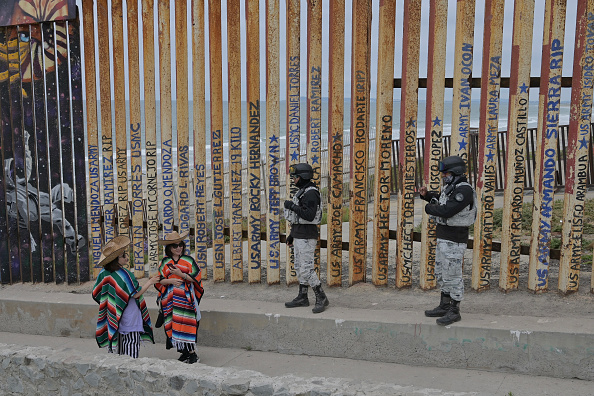
WASHINGTON (AP) — The Pentagon will begin deploying up to 1,500 active-duty troops in the coming days to help secure the southern border, U.S. officials announced Wednesday, shortly after President Donald Trump took office. The plan outlined in the ordinance was put into action. to crack down on immigration.
Acting Defense Secretary Robert Saleses is expected to sign the activation order on Wednesday, but it is not yet clear which troops or troops will be deployed, and the total number could change. It remains to be seen whether they will end up in law enforcement, but it will give the U.S. military a dramatic new role not seen in recent history.
The people spoke on condition of anonymity because the matter had not yet been announced.
The active-duty troops will join the approximately 2,500 National Guard and Reserve troops already stationed there. There are currently no active military forces operating along the border.
Migrants cross the border wall from Mexico and are loaded into a van by U.S. Border Patrol near Campo, California, about 80 miles from San Diego, Wednesday, March 13, 2024.
The unit is expected to be used to assist Border Patrol agents with logistics, transportation and barrier construction. Trump and former President Joe Biden have both performed similar missions in the past when they sent active-duty troops to the border.
The law prohibits the military from carrying out law enforcement duties at the border, but that could change. Through an executive order, President Trump directed the next Secretary of Defense and the next Secretary of Homeland Security to report within 90 days if they believe the 1807 law known as the Insurrection Act should be invoked. This would allow these forces to be used for civil law enforcement on U.S. soil.
The widely anticipated deployment, which took place during Trump’s first week in office, was the first step in his long-touted plan to expand military use along the border. In one of his first orders on Monday, President Trump directed the Secretary of Defense to develop a plan to “close the border” and repel “mass illegal immigration.”
On Tuesday, just as President Trump fired Coast Guard Commander Adm. Linda Fagan, the Coast Guard announced it would rush more cutters, aircraft and personnel to the “Gulf of America.” This is another nod to the president’s directive to rename the Gulf of Mexico. .
“I am declaring a national emergency at our southern border. All illegal immigration will cease immediately and we will begin the process of returning millions of criminal aliens,” President Trump said in his inaugural address on Monday.
In his first term, President Trump sent active-duty troops to the border to assist Homeland Security and border control officials in response to a migrant caravan slowly making its way through Mexico toward the United States in 2018. I ordered him to do it.
In an executive order signed Monday, President Trump indicated the military would support DHS with “accommodation space, transportation (including aircraft), and other logistics services.”
Active-duty U.S. soldiers are prohibited from performing law enforcement duties under the Posse Policing Act, a 19th-century federal law. Therefore, people cannot be arrested or detained at the border unless the president invokes the Insurrection Act.
The Insurrection Act allows the president to call in reserve or active-duty military units to respond to unrest in states, but this authority is not subject to court review.
The 2018 deployment sent more than 7,000 active-duty troops to Texas, Arizona, and California, including military police, assault helicopter battalions, various signal units, medical units, command units, combat engineers, planners, and public affairs units. Ta.
At the time, the Pentagon was adamant that active-duty military personnel would not perform law enforcement. As such, they spend much of their time transporting Border Patrol agents into and along the border, helping install additional vehicle barriers and fencing along the border, assisting with communications, and providing security to Border Patrol agent camps. I spent a lot of time providing it.
The military also provided Border Patrol agents with medical care, prepackaged meals, and temporary housing.
Typically, Homeland Security-sponsored border deployments involve Pentagon officials requesting details from the Department of Homeland Security about what needs to be accomplished, and military leaders deciding which troops to send and how many. Decide what to do.
Source link




